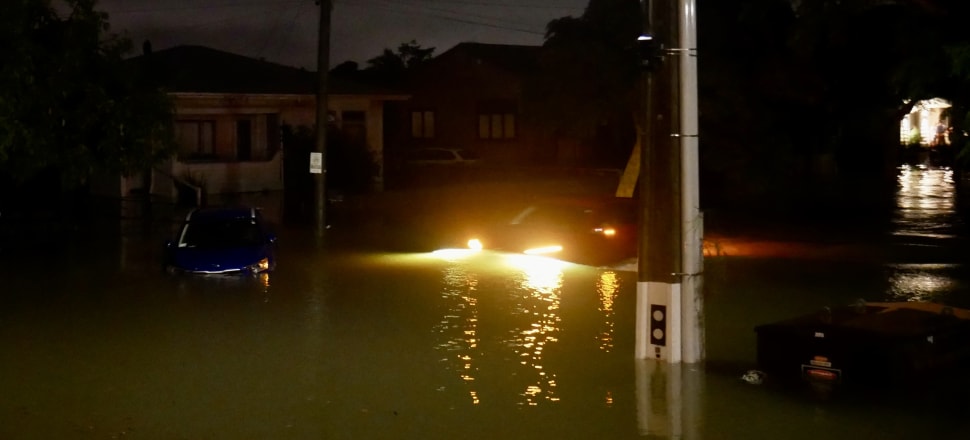
Unfortunately the great flood of January 27 was not a one-off but a precursor to more emergencies likely to strike the city because of environmental effects of climate change.
While the Auckland floods are proving devastating, costly and far-reaching, they have also had the strange effect of revealing Tamaki Makaurau's original landscape.
Before the 20th-century urbanisation of the city, the indigenous landscape was a complex system of streams, rivers, wetlands and bays.
But streams were piped, marshes and bays were filled in. A key example is Opoutukeha, the stream and wetland that would become Grey Lynn Park and the Cox's Bay Reserve. The Opoutukeha returned with a vengeance on Friday January 27, 2023 as Grey Lynn Park flooded and Dryden Street became a raging torrent barrelling towards the Waitematā
Preventing the kind of floods we saw then is impossible, but we can slow them down by restoring the existing urban streams and rebuilding the surrounding ecology; Julia Tuineau, Pragna Patel and Te Ara-rata Stream Team in Mangere have spent many years with the community replanting and rebuilding the ecology of a crucial urban stream. Other urban streams have been successfully restored—notably the Te Auaunga around the Walmsley and Underwood Reserve
Restoring wetlands is another way flooding can be absorbed and slowed down. There are several notable examples of restored wetlands, the Waiatarua wetland in Remuera, the largest restoration project in Tamaki, was rebuilt in 1987. Newly constructed wetlands exist through the isthmus now; Vaughan Stream Corridor Wetlands in Long Bay, which provide 28 hectares of parkland and the Kopupaka Reserve in Westgate.
These restored streams and wetlands can not only help with absorbing and retaining flooding but can help restore Auckland's biodiversity.
The growth of indigenous vegetation helps provide habitats for the region’s unique flora and fauna, and the restored streams can provide corridors for the native birds to traverse the isthmus. Planting can also provide shade which will become increasingly important as the temperature increases with the growth of the vegetation helping with carbon capture.
And, importantly for Tamaki, these new spaces can also be new parks and public spaces for our growing population.
There are many challenges to overcome, but we can see how by starting to plan to build resilience to future flooding, we can also make a green network of restored streams and wetlands over the entire city.
A green vision of Tamaki is exciting, but we have to recognise the impact the new urban development has had on exacerbating the flooding.
The more we build, the more we cover the ground with impervious surfaces such as driveways, roading and footpaths which means the less land there is to absorb water, and the worse the flooding.
Of course, we need more housing, however recent housing legislation, especially the so-called three-pack which gives the right to build three houses on one section without resource consent, must now be questioned.
What is now apparent is that there needs to be a better connection between intensive housing developments and understanding the underlying landscape conditions. We should not build housing in flood zones, in overland flow paths, or on top of old wetlands.
The legislation to allow for six-storey housing is welcome but perhaps these buildings should be higher in exchange for making a smaller footprint to allow for more greenery.
The important thing is to connect the location of new housing not just with transport links but with natural landscapes. With careful planning and by being aware of the underlying landscape, new housing can be integrated with our new green flood network.
Making Auckland safe from the effect of climate change is a considerable challenge.
The January 27 floods have shown us ignorance is not an option. Auckland will flood again but by understanding the underlying landscape, we can know where this will happen, and we have the expertise and knowledge to help remediate these effects.







